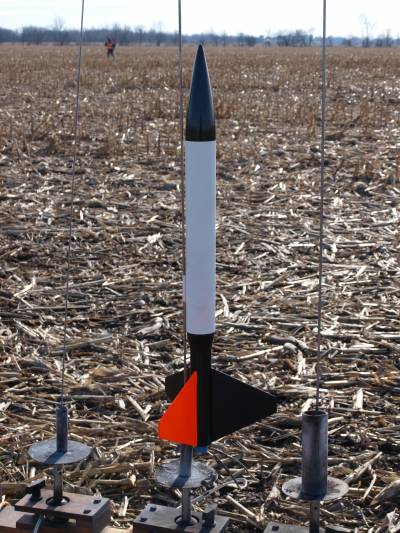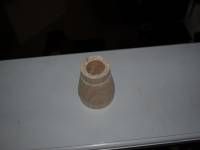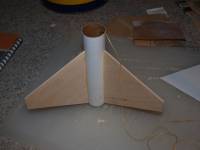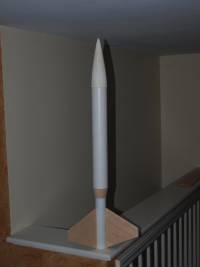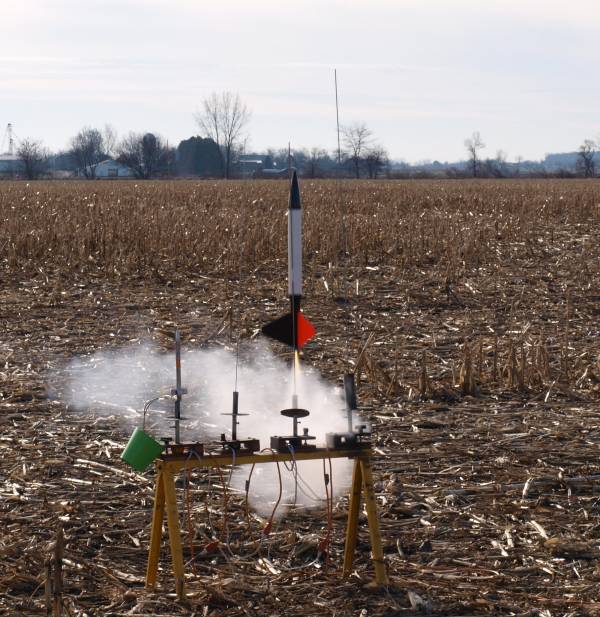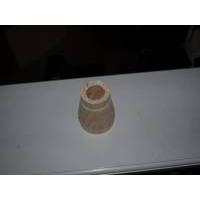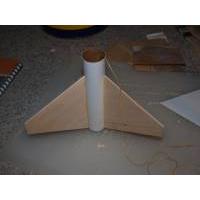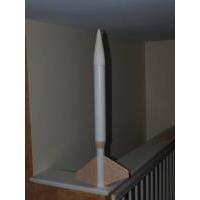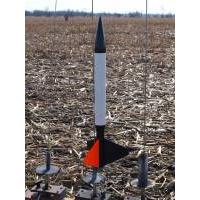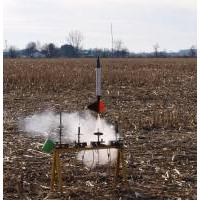| Construction Rating: | starstarstarstarstar |
| Flight Rating: | starstarstarstarstar |
| Overall Rating: | starstarstarstarstar |
| Published: | 2012-09-30 |
| Manufacturer: | Scratch |
Brief
Back in 1977, I sent for an FSI catlog after finding an address in the back of a library book. While not as flashy as the Centuri and Estes catalogs I was used to, there were a couple of designs that caught my eye back then, specifically the Nova and Sprint. I eventually found an original FSI Nova that I built and flew, but the Sprint remained elusive. I recently made a Semroc purchase of parts that I thought I needed to rebuild a Centuri Taurus upscale that I'd built and flown several years back, but found that I could reuse a lot more of the original parts than I thought. This left me with two TA6070 transitions and no clear project for them. I hate to waste anything, especially anything as well made as a Semroc balsa transition, hence my "FSI Upscale" phase.
Components
- 14.25" BT-70 body tube (BMS)
- 7.5" BT-60 body tube (BMS)
- 4" BT-40 engine tube (BMS)
- TA-6070 balsa transition (Semroc)
- BNC-70B nose cone (Semroc)
- 1/8" balsa stock
- 5020 engine block (Semroc)
- 36" Kevlar shock cord
- 36" shock cord 1/4" sewing elastic
- medium screw eye
- large snap swivel
- reefed 18" parachute
Construction
There aren't a whole lot of parts for this rocket, which greatly cuts down on the chance of gotchas. I love projects like that. The most work-intensive part of the project was drilling out the center of the TA6070 transition, which I accomplished using by first drilling through the transition with a 1/8" drill bit, then taking out enough of the rest of the material to make a BT-50 size hole with a Dremel tool and attachment.
As with most of my projects, I tied a 36" piece of Kevlar behind the front centering ring to anchor the rest of the recovery system. This was threaded up through the Dremel hole in the transition and attached to a 36" length of 1/4" sewing elastic. A medium snap-swivel attached to a hefty screw eye which was glued into the nose cone bottom to tie the whole thing together.
Finishing
After disposing of the balsa grain and tube spirals with two coats of thinned Elmer's Carpenters Wood Filler and LOTS of sanding, I sprayed the rocket with white Valspar primer. I then sprayed one fin with Rustoleum Flourescent Orange, completely masked it off down to the body tube, then burnished the edges of the tape to keep any of the paint to come from seeping in. The main body tube was sprayed with Valspar gloss white, while the nose cone and everything below the transition was painted with Valspar gloss black. When all was dry I unmasked the orange fin and as usual, was pleasantly surprised at the "pop" that the flourescent paint provides. I had no decals planned, but with the white, orange and black scheme I was reminded of the Cincinnati Bengals, and found a photo of a vintage logo that I remembered from grade school that was perfectly sized for the upper body tube. I'm not sure how this ties in with the whole Sprint thing, but it sure beats a big, blank section of white body tube.
Flight
To date I've made only one flight with the Sprint, but that was due to a backlog of first flight mid-power kits more than anything else. Loaded with an Estes E9-4, the rocket lifted off with authority and immediately began to windcock. Ejection occurred as the rocket was approaching horizontal due to the wind, but recovery was perfect and the rocket recovered deep in the cornfield on the 12" nylon chute, so deep that it initially appeared to be in a neighboring cornfield. (This would have been a problem as there is a decent size creek that separates the two cornfields.) The recovery walk was long, and the search took me to areas of the field where few humans had previously trod, but along the way I found two rockets belonging to other fliers. (Second time I've done that.) After thirty minutes I finally caught a flash of orange and walked right over to the rocket, which appeared to be sitting in a spot I'd passed at least twice. I swear I did. The rocket was undamaged, but the length of the recovery walk on the 12" chute had me wondering how much further it would have been with a 15" or 18" chute.
Flight Rating: 5
Summary
Pros: Classic lines, impressive performance on Estes E9, ease of construction.
Cons: Central Ohio cornfields are windy!
Related Products
 |
 |
Flights
Date | Flyer | Rocket | Altitude |
|---|---|---|---|
Sponsored Ads
 |
 |
